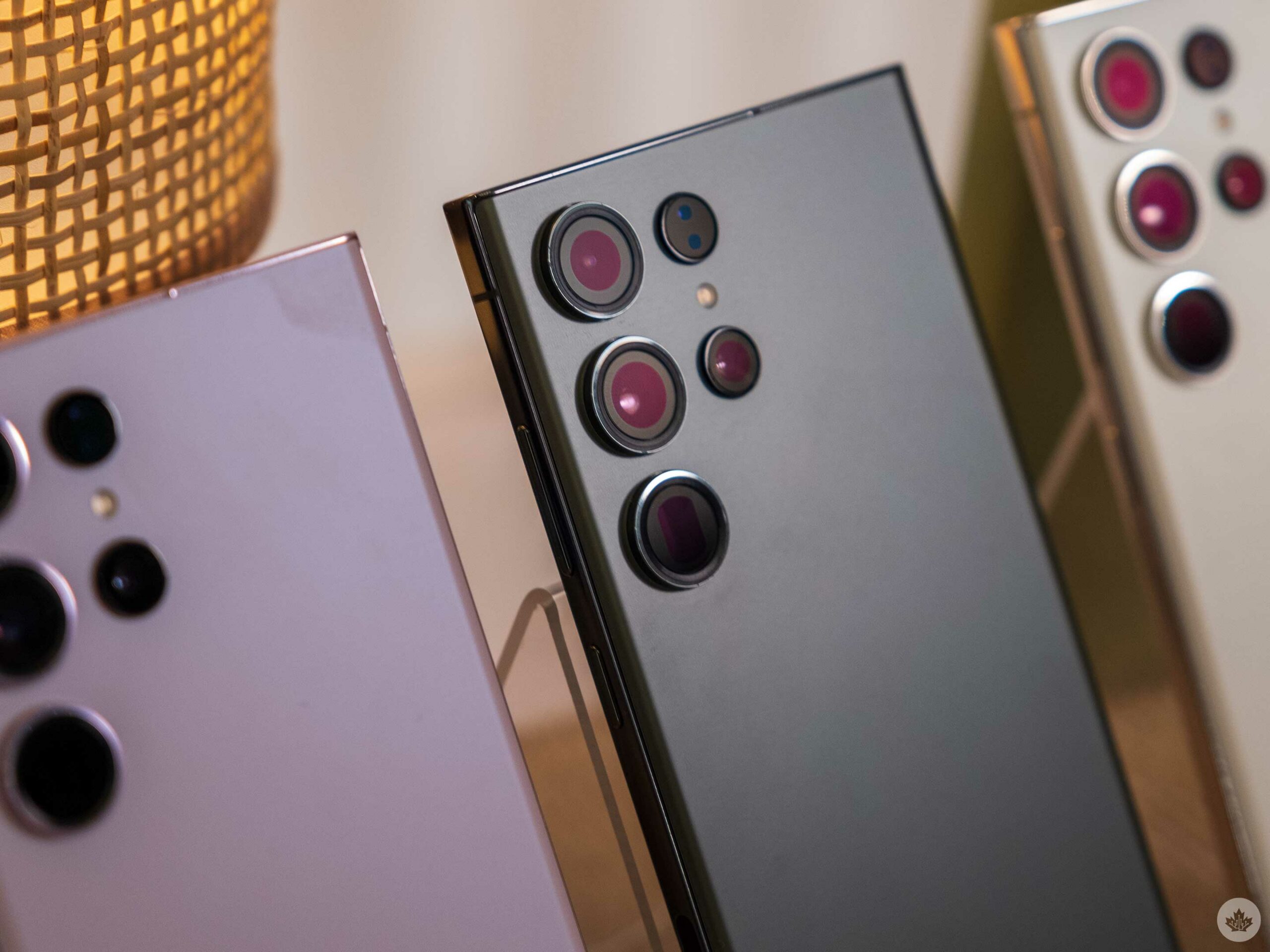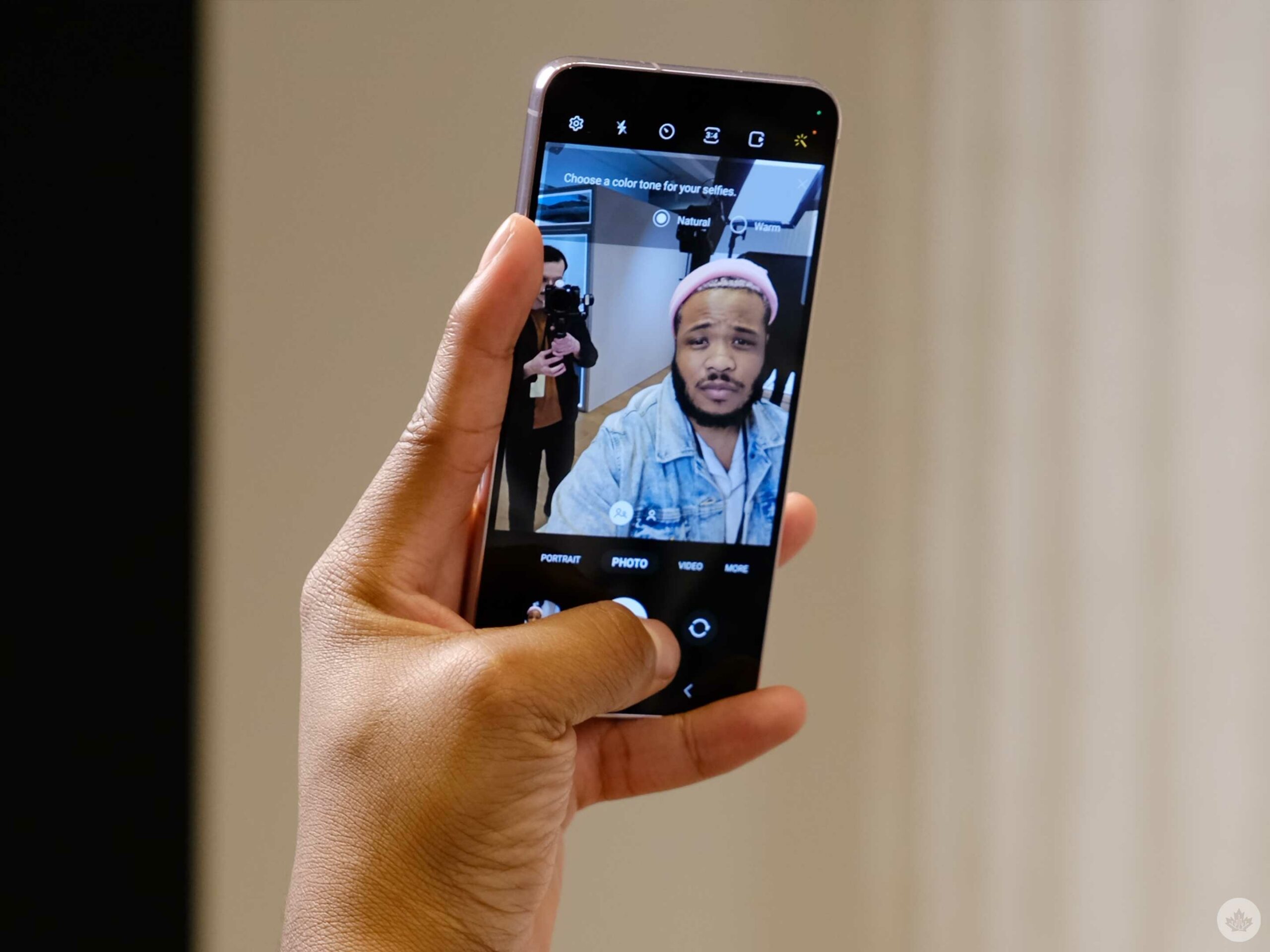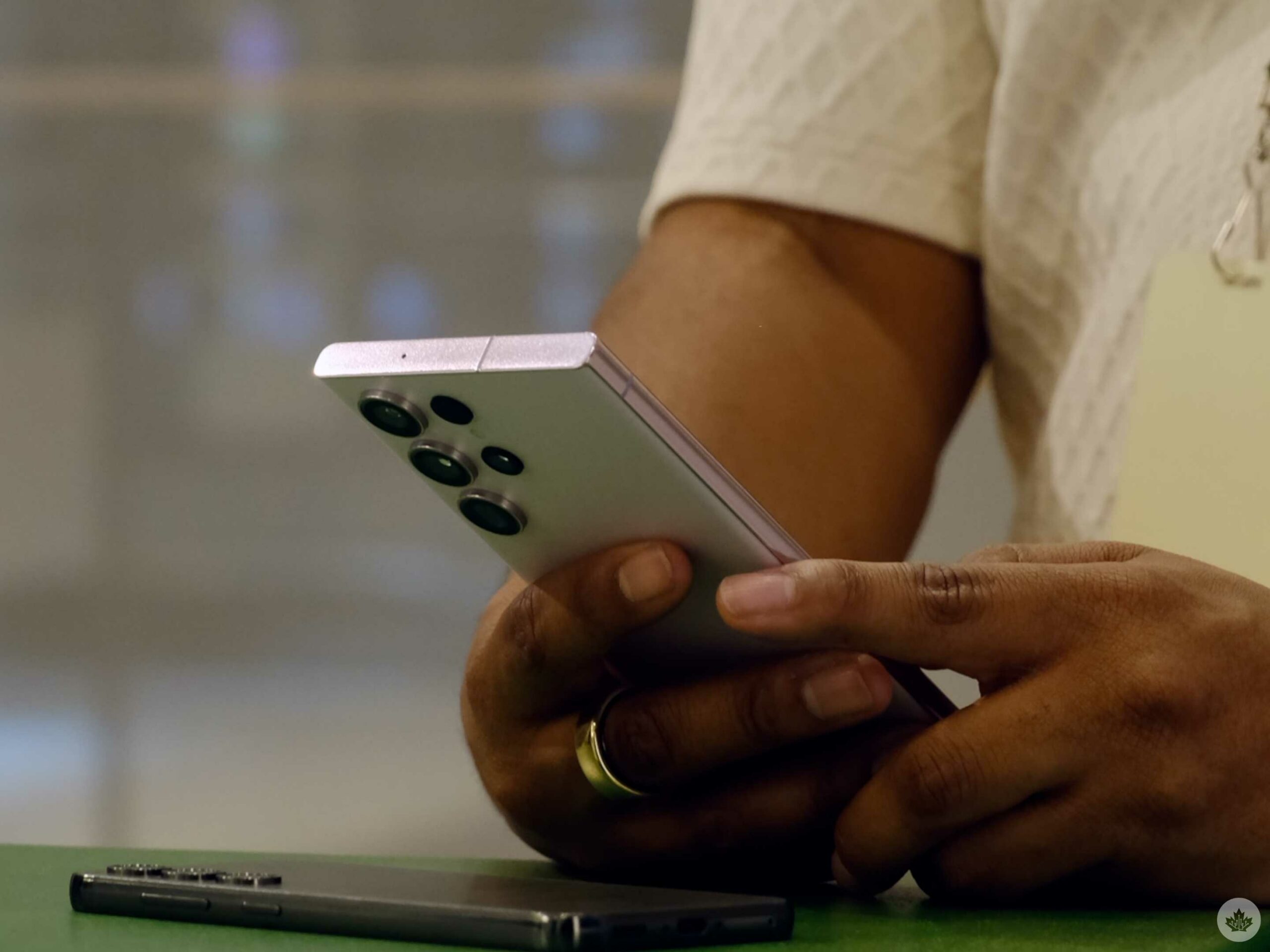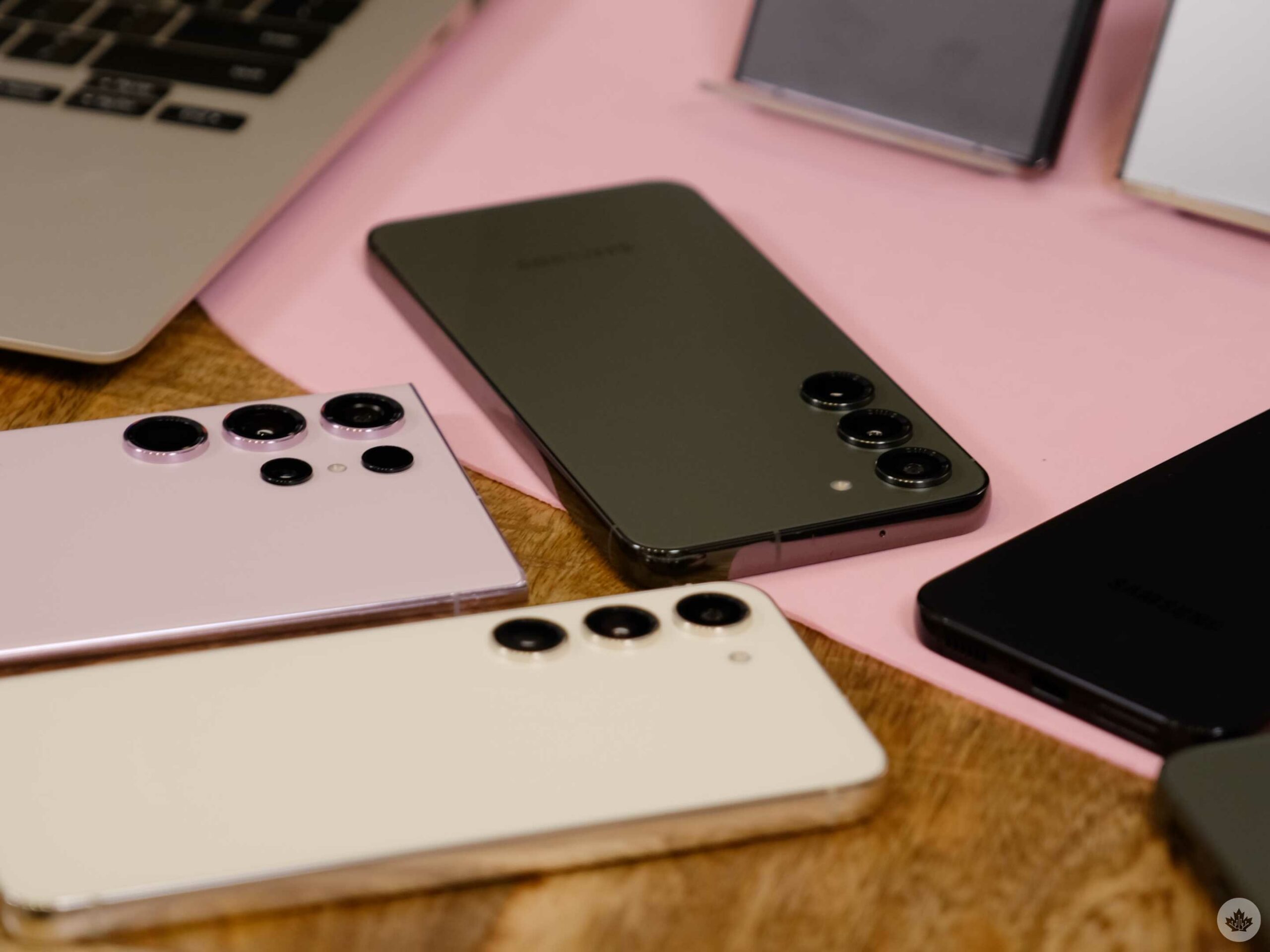Samsung announced the new S23 series smartphones at its Unpacked event in San Francisco, and I had the opportunity to go hands-on with all three devices.
The South Korean tech giant’s Galaxy S23, S23+ and S23 Ultra are top-tier Android devices, but for the most part, the new handsets offer only subtle updates compared to their previous models. With this in mind, if you’re an S22 series owner, you can probably skip this year because there aren’t enough reasons to go to the Samsung store and buy an S23 device.
Across the board, you’re looking at mostly the same specs on all three models when compared to the S22 line, but there are a few notable differences.
In this hands-on, I primarily focus on the S23 Ultra as it features a new 200-megapixel primary camera, though the S23 and S23+ also feature a few minor changes when compared to last year’s smartphones.
6.1-inch Flat Dynamic AMOLED, 1,080 x 2,400 pixels, 20:9 aspect ratio, 120Hz display, HDR10+, 240Hz Touch Sampling in Games
6.6-inch Flat Dynamic AMOLED, 1,080 x 2,400 pixels, 20:9 aspect ratio, 120Hz display, HDR10+, 240Hz Touch Sampling in Games
6.8-inch Curved Dynamic AMOLED, 1,440 x 3,200 pixels, 20:9 aspect ratio, 120Hz display (variable 1-120Hz) HDR10+, 240Hz Touch Sampling in Games
Qualcomm Snapdragon 8 Gen 2
Qualcomm Snapdragon 8 Gen 2
Qualcomm Snapdragon 8 Gen 2
50-megapixel (f/1.8, wide) + 10-megapixel (f/2.4, 3x zoom) + 12-megapixel (f/2.2, 120-degree FOV, ultrawide)
50-megapixel (f/1.8, wide) + 10-megapixel (f/2.4, 3x zoom) + 12-megapixel (f/2.2, 120-degree FOV, ultrawide)
200-megapixel, 12-megapixel (f/2.2, 120-degree), 10-megapixel (f/4.9, 10x zoom), 10-megapixel (f/2.4, 3x zoom)
Fingerprint (in-display), accelerometor, gyro, proximity, compass
Fingerprint (in-display), accelerometor, gyro, proximity, compass
Fingerprint (in-display), accelerometor, gyro, proximity, compass
Colours: ‘Phantom Black,’ ‘Green,’ ‘Lavendar,’ ‘Creme’
Colours: ‘Phantom Black,’ ‘Green,’ ‘Lavendar,’ ‘Creme’
Colours: ‘Phantom Black,’ ‘Green,’ ‘Lavendar,’ ‘Creme’
6.1-inch Flat Dynamic AMOLED, 1,080 x 2,400 pixels, 20:9 aspect ratio, 120Hz display, HDR10+, 240Hz Touch Sampling in Games
6.6-inch Flat Dynamic AMOLED, 1,080 x 2,400 pixels, 20:9 aspect ratio, 120Hz display, HDR10+, 240Hz Touch Sampling in Games
6.8-inch Curved Dynamic AMOLED, 1,440 x 3,200 pixels, 20:9 aspect ratio, 120Hz display (variable 1-120Hz) HDR10+, 240Hz Touch Sampling in Games
Qualcomm Snapdragon 8 Gen 2
Qualcomm Snapdragon 8 Gen 2
Qualcomm Snapdragon 8 Gen 2
50-megapixel (f/1.8, wide) + 10-megapixel (f/2.4, 3x zoom) + 12-megapixel (f/2.2, 120-degree FOV, ultrawide)
50-megapixel (f/1.8, wide) + 10-megapixel (f/2.4, 3x zoom) + 12-megapixel (f/2.2, 120-degree FOV, ultrawide)
200-megapixel, 12-megapixel (f/2.2, 120-degree), 10-megapixel (f/4.9, 10x zoom), 10-megapixel (f/2.4, 3x zoom)
Fingerprint (in-display), accelerometor, gyro, proximity, compass
Fingerprint (in-display), accelerometor, gyro, proximity, compass
Fingerprint (in-display), accelerometor, gyro, proximity, compass
Colours: ‘Phantom Black,’ ‘Green,’ ‘Lavendar,’ ‘Creme’
Colours: ‘Phantom Black,’ ‘Green,’ ‘Lavendar,’ ‘Creme’
Colours: ‘Phantom Black,’ ‘Green,’ ‘Lavendar,’ ‘Creme’
Galaxy S23 and S23+
Let’s quickly go over the S23 and S23+ before moving on to the higher-end smartphone. These two devices are nearly identical to last year’s models. For example, they offer the same 8GB of RAM and the rear-facing camera array. Regarding design, this year, the smartphones feature more squared edges, which pushes the device closer in line with Apple’s more recent squared-off iPhone look in some respects.
The camera experience does seem a bit better in my testing, but that’s primarily because of upgraded HDR software. The selfie shooter is also similar to the S23 Ultra’s, which is a welcome change (I’ll talk more about the improved selfie camera in the S23 Ultra’s camera section of this hands-on).
It’s worth noting that the Galaxy S23 and S23+ feature bigger batteries; the S23’s battery is now 3,900mAh, and the S23+ battery measures in at 4,700mAh. It’s unclear how this battery upgrade affects the overall battery, but we’ll be sure to test it out in our upcoming reviews.
200-megapixel camera
 Now, let’s move to the S23 Ultra and its main new feature.
Now, let’s move to the S23 Ultra and its main new feature.
The S23 Ultra’s primary shooter offers a 200-megapixel sensor, which utilizes pixel binning of 16 pixels together to create larger 12-megapixel images. It can also automatically pixel bin to create 50-megapixel shots under perfect lighting. I didn’t use the handset for long, but I’m impressed with the image quality. For the past three years, Samsung’s flagship cameras have all offered the same 108-megapixel primary shooter, so it’s great to see the company finally upgrade the Ultra line’s primary shooter.
The 200-megapixel camera takes pictures that are noticeably better than the S22 Ultra. The colour is more accurate, making the images look vibrant, with additional detail and sharpness. I only snapped a few pictures with the S23 Ultra, but I compared the results to the S22 Ultra’s photos. In one of the images, I could clearly make out the writing on Brad Bennett’s camera compared to the S22 Ultra, which experienced problems capturing the detail.
 Besides superior picture quality under good lighting, the S23 Ultra now takes better nighttime photos. A section of Samsung’s demo area featured dim lighting, allowing us to test the smartphone’s low-light photography capabilities. And again, these pictures were noticeably better. In one of the photos I took, I could see that while the focal point of the image was brighter, the rest retained its darkness, making the picture more true-to-life. In contrast, the S22 Ultra makes the entire image brighter, which isn’t accurate to the real scene, and lowers the quality of the picture.
Besides superior picture quality under good lighting, the S23 Ultra now takes better nighttime photos. A section of Samsung’s demo area featured dim lighting, allowing us to test the smartphone’s low-light photography capabilities. And again, these pictures were noticeably better. In one of the photos I took, I could see that while the focal point of the image was brighter, the rest retained its darkness, making the picture more true-to-life. In contrast, the S22 Ultra makes the entire image brighter, which isn’t accurate to the real scene, and lowers the quality of the picture.
In another test, I snapped a picture of a neon sign. While taking the shot, the sign looked overexposed, and the light made the wording too bright. However, the photo turned out perfect, with the accurate colours, and once again, the rest of the image was dark, offering an authentic nighttime vibe. There’s also a new picture mode that lets users take shots of a starry night, which I didn’t have the opportunity to try out.
“The S23 Ultra now has a 12-megapixel selfie camera, which is a notable downgrade compared to the S22 Ultra, S21 Ultra and S20 Ultra, which all sport a 40-megapixel front-facing shooter.”
Further, Samsung has now built Expert RAW straight into the camera app so that you can easily take pictures with every single one of those 200 megapixels. You wouldn’t want to do this unless you’re blowing up the pictures, but in the demo, Samsung featured a portrait section that enlarged the photos, and they looked amazing. You can easily make out the hair follicles in my beard, the fabric on my pink hat and more. However, some images did turn up a little blurry because of movement, which makes sense if you’re taking RAW shots with a 200-megapixel camera.
It’s worth noting the S23 Ultra does have three other cameras, but since they’re the same as last year’s model, I didn’t test them out as I wanted to focus on the new 200-megapixel sensor. Considering they’re the same as the S22 Ultra’s, I assume they’re also pretty great.
Downgrade?
 The S23 Ultra now has a 12-megapixel selfie camera, which is a notable downgrade compared to the S22 Ultra, S21 Ultra and S20 Ultra, which all sport a 40-megapixel front-facing shooter. Even though this is a downgrade on paper, the S23’s selfies look nearly the same as the 40-megapixel sensor in the S22 Ultra. Comparing the two, I could barely tell the difference between the shots. Sure, you won’t be able to blow up these selfies, but I doubt most people will do this.
The S23 Ultra now has a 12-megapixel selfie camera, which is a notable downgrade compared to the S22 Ultra, S21 Ultra and S20 Ultra, which all sport a 40-megapixel front-facing shooter. Even though this is a downgrade on paper, the S23’s selfies look nearly the same as the 40-megapixel sensor in the S22 Ultra. Comparing the two, I could barely tell the difference between the shots. Sure, you won’t be able to blow up these selfies, but I doubt most people will do this.
On the plus side, the images offered a lot of detail and accurate colour — even with my darker skin. A 12-megapixel shooter puts the S23 Ultra in line with phones like iPhone 14 Pro and the Pixel 7 Pro, and while I’m not a big fan of seeing any downgrades, this one makes sense.
As I previously mentioned, S23 and S23+ are upgraded to this 12-megapixel selfie shooter, matching the Ultra’s camera, which is a bonus for anyone looking to get one of the smaller devices.
Ultra flagship
 The S23 Ultra looks nearly identical to its predecessor, but its display is a bit flatter, and its edges are a little less curved. This isn’t a massive change, but it makes the phone more comfortable to hold. People seem to like flatter smartphone displays, so this change should be a bonus for most users. I used to fanboy over curved displays as I believe it makes the experience more immersive, but the trend is dying out, and I’ve grown accustomed to flatter smartphone displays. The S23 Ultra also offers Gorilla Glass Victus 2 on its front and back, which should help better protect the handset from falls.
The S23 Ultra looks nearly identical to its predecessor, but its display is a bit flatter, and its edges are a little less curved. This isn’t a massive change, but it makes the phone more comfortable to hold. People seem to like flatter smartphone displays, so this change should be a bonus for most users. I used to fanboy over curved displays as I believe it makes the experience more immersive, but the trend is dying out, and I’ve grown accustomed to flatter smartphone displays. The S23 Ultra also offers Gorilla Glass Victus 2 on its front and back, which should help better protect the handset from falls.
Alongside the flatter screen, we have a 5,000mAh battery, 8GB and 12GB of RAM variants, up to 1TB of storage and most importantly, a Snapdragon 8 Gen 2 processor. I didn’t play around too much with the device to test this fancy new processor, but I played Asphalt 9, and the game looked beautiful and ran smoothly. The Snapdragon 8 Gen 2 processor gives games ray-tracing capabilities, but there aren’t many mobile games that offer the graphical effect.
The phone offers a 6.8-inch panel with a 120Hz refresh rate and QHD+ resolution. This is similar to the S22 Ultra, and like that device, images on the screen are crisp, colours are accurate, and scrolling is buttery smooth.
Of course, since the Ultra flagships are the new Note devices, there’s an S Pen. I didn’t use the S Pen much, but Samsung says it’s more fluid, with a latency of 2.8ms, and when writing notes and digitizing your scribbles into writing, the stylus can understand more than 80 languages.
Familiar experience
 In my testing, the S23 Ultra’s camera array is overall better than the S22’s, and I’m excited to put it through its paces once I get my hands on a review device. Alongside its shiny new 200-megapixel camera, I’ll test out its other three sensors, and put the Snapdragon 8 Gen 2 through the wringer, alongside the 12GB of RAM and 5,000mAh battery.
In my testing, the S23 Ultra’s camera array is overall better than the S22’s, and I’m excited to put it through its paces once I get my hands on a review device. Alongside its shiny new 200-megapixel camera, I’ll test out its other three sensors, and put the Snapdragon 8 Gen 2 through the wringer, alongside the 12GB of RAM and 5,000mAh battery.
On the other hand, the S23 and S23+ are pretty much the same as last year’s devices, with upgraded camera software and a better selfie shooter.
The S23 starts at $1,099.99 for the 128GB model and $1,179.99 for the 256GB variant. The 265GB S22+ is available for $1,399, and the 512GB variant comes to $1,559.
Lastly, the Ultra comes in at $1,649.99 for the 256GB model, the 512GB variant costs costs $1,889.99, and the Samsung exclusive 1TB costs costs $2,209. While previous rumours said the phones would be more expensive, this luckily isn’t the case. In fact, the S22 Ultra’s 128GB model was priced at $1,649.99, the same as the S23 Ultra’s 256GB. Samsung cutting the 128GB storage variant from the Plus and Ultra options was definitely a solid choice on the tech giant’s part.
The S23 series comes in ‘Lavender” ‘Green,’ ‘Cream’ and ‘Phantom Black’ and are now available for pre-order. Further, the Galaxy S23 and S23+ are also available in ‘Lime’ and ‘Graphite’ while the S23 Ultra is available in ‘Lime,’ ‘Graphite,’ ‘Red’ and ‘Sky Blue’ colourways exclusively on Samsung’s website.
For all of MobileSyrup’s Unpacked 2023 content, follow this link.
MobileSyrup utilizes affiliate partnerships. These partnerships do not influence our editorial content, though we may earn a commission on purchases made via these links that helps fund the journalism provided free on our website.
